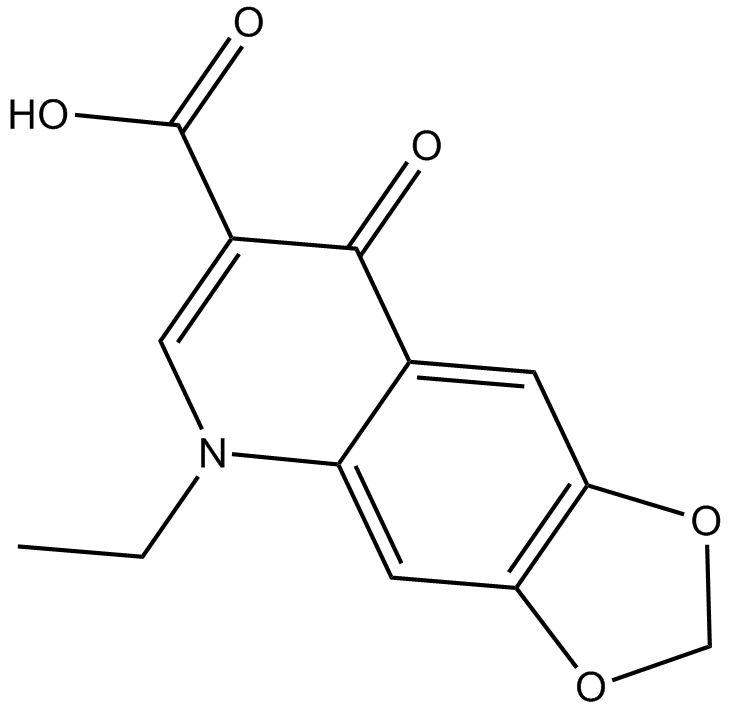Oxolinic acid (Synonyms: NSC 110364, Urinox) |
| Catalog No.GC14107 |
quinolone antibiotic that inhibits bacterial DNA gyrase
Products are for research use only. Not for human use. We do not sell to patients.

Cas No.: 14698-29-4
Sample solution is provided at 25 µL, 10mM.
IC50: 4.3 μM for dopamine uptake
Oxolinic acid is a quinolone antibiotic inhibiting bacterial DNA gyrase.
DNA gyrase, an enzyme within the class of topoisomerase, relieves strain while double-stranded DNA is being unwound by helicase.
In vitro: Previous study found that both inhibitors of DNA gyrase of oxolinic acid and coumermycin A1 could block the DNA synthesis in E. coli. Moreover, the rate of bacterial DNA synthesis first rapidly declined but then increased gradually at low concentrations of oxolinic acid. In varoius DNA mutants, oxolinic acid was able to cause a rapid decline, followed by a slow decrease in synthesis rate of DNA [1].
In vivo: Animal study showed that the i.p. injection of oxolinic acid in mice could induce a dose dependent increase in locomotor activity, and such stimulation culminated at the 32 mg/kg dose and was smaller for higher doses at 64-128 mg/kg. When compared with haloperidol (D2 dopamine receptor antagonist) at increasing doses (50-100-200 mg/kg), the stimulant locomotor effect of oxolinic acid at 32 mg/kg was not reversed significantly. In addition, oxolinic acid at 32 mg/kg did not reverse the reserpine caused akinesia and even opposed the reversion that was induced by dexamphetamine [2].
Clinical trial: Oxolinic acid is an antibiotic developed in Japan in the 1970s. Oral dose at 12–20 mg/kg is administered for 5-10 days (https://en.wikipedia.org/wiki/Oxolinic_acid).
References:
[1] E C Engle,S H Manes, and K Drlica. Differential effects of antibiotics inhibiting gyrase. J Bacteriol. 1982 Jan; 149(1): 92–98.
[2] Garcia de Mateos-Verchere J,Vaugeois JM,Naudin B,Costentin J. Behavioural and neurochemical evidence that the antimicrobial agent oxolinic acid is a dopamine uptake inhibitor. Eur Neuropsychopharmacol. 1998 Dec;8(4):255-9.
Average Rating: 5 (Based on Reviews and 1 reference(s) in Google Scholar.)
GLPBIO products are for RESEARCH USE ONLY. Please make sure your review or question is research based.
Required fields are marked with *




















